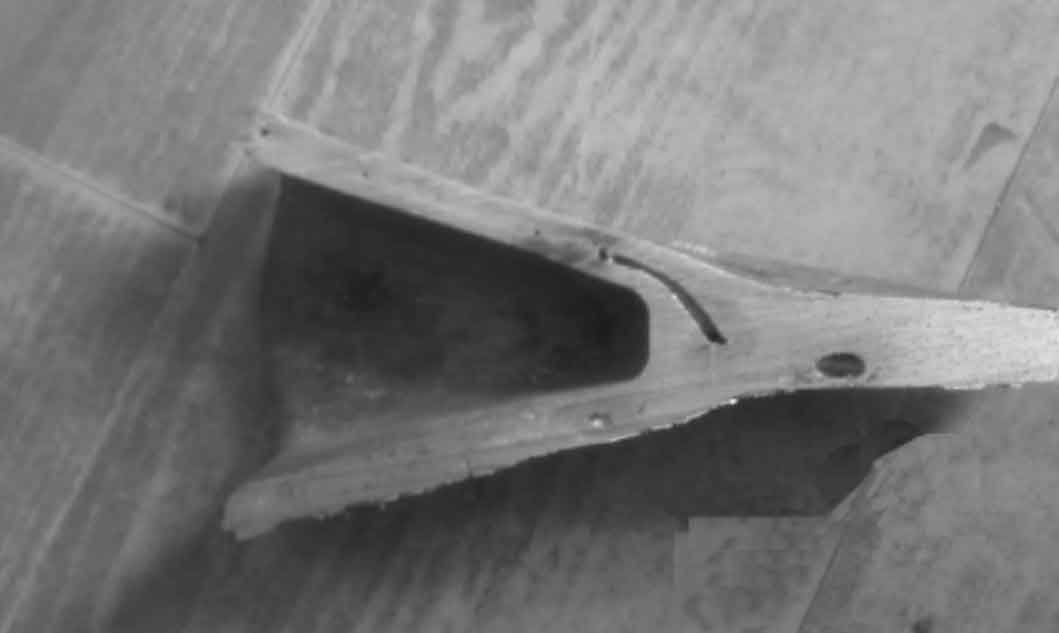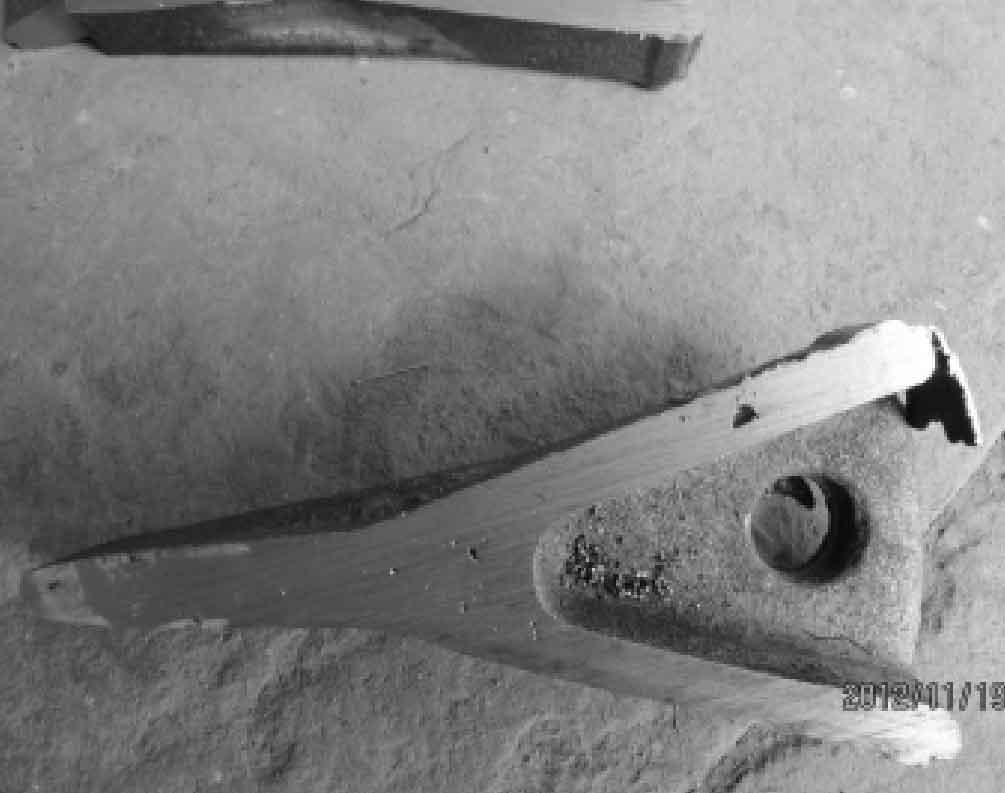1. Defect characteristics
Pores are found around the hot joint of the cut workpiece, and pores are also found on the four peripheral walls of the core cavity, as shown in Fig. 1 and Fig. 2.
The blowholes in extruded castings can be divided into precipitation blowholes, invasive blowholes and reaction blowholes, and the formation of shrinkage and porosity in castings is mostly accompanied by gas precipitation. Blowholes are associated with shrinkage and porosity. If the air content in the alloy is too high, or too much gas is invaded in the filling process of liquid metal, the formation of the above shrinkage cavity or pore will be exacerbated. Through the analysis of the cutting bucket teeth, it can be seen that the distribution of pores is random, and the pores are large, mostly spherical and ball. It can be concluded that this pore basically belongs to invasive pores.
2. Cause analysis
The condition of invasive porosity in castings is p gas > P static + P type + P resistance. Wherein, P gas is the gas film pressure on the mold surface in contact with the liquid metal; P is the static pressure formed by the liquid metal in the mold; Type P is the pressure of gas on the free surface of liquid metal; P resistance is the resistance of gas when invading liquid metal, which is related to the surface tension of liquid metal. Pores are produced during squeeze casting. When the indenter pushes the liquid metal upward, it presents a 90 ° bend at the gate and enters the mold cavity to form the casting. The viscosity of the metal is mainly related to the floating speed of the metal in the liquid filling process.
With the decrease of temperature, the viscosity of liquid metal increases; When the viscosity of the liquid metal increases to a certain extent and the floating speed of the bubble tends to zero, the bubble stops floating and remains in the liquid metal to form bubbles. The main reason is that the mold exhaust is not smooth, and the gas in the mold cavity can not be discharged smoothly. These gases are stored between the mold cavity and the metal liquid during the mold filling process. Because the metal liquid can not completely dissolve these gases, and this part of the metal liquid in contact with the air solidifies first to form a thin solidification shell, resulting in the accumulation of non discharged gases in a certain area inside the part and the formation of pores. At the same time, because squeeze casting is filled and solidified under high pressure, the gas above the liquid metal is compressed rapidly, resulting in the increase of P gas, which creates conditions for the formation of pores.
3. Preventive measures
According to the above analysis, the technical ways to prevent blowholes are as follows: ① increase the preheating temperature of the die to 250 ℃ and reduce the cooling rate of the liquid metal; ② Strengthen the mold exhaust system, and set two at the highest point of the mold cavity on the mold Φ 10mm exhaust hole and appropriately increase the clearance of side core pulling; ③ Raise the pouring temperature to 1620 ℃; ④ Appropriately increase the cross-sectional area of the inner sprue and reduce the speed of liquid metal entering the cavity, so as to appropriately reduce the air entrainment behavior.


